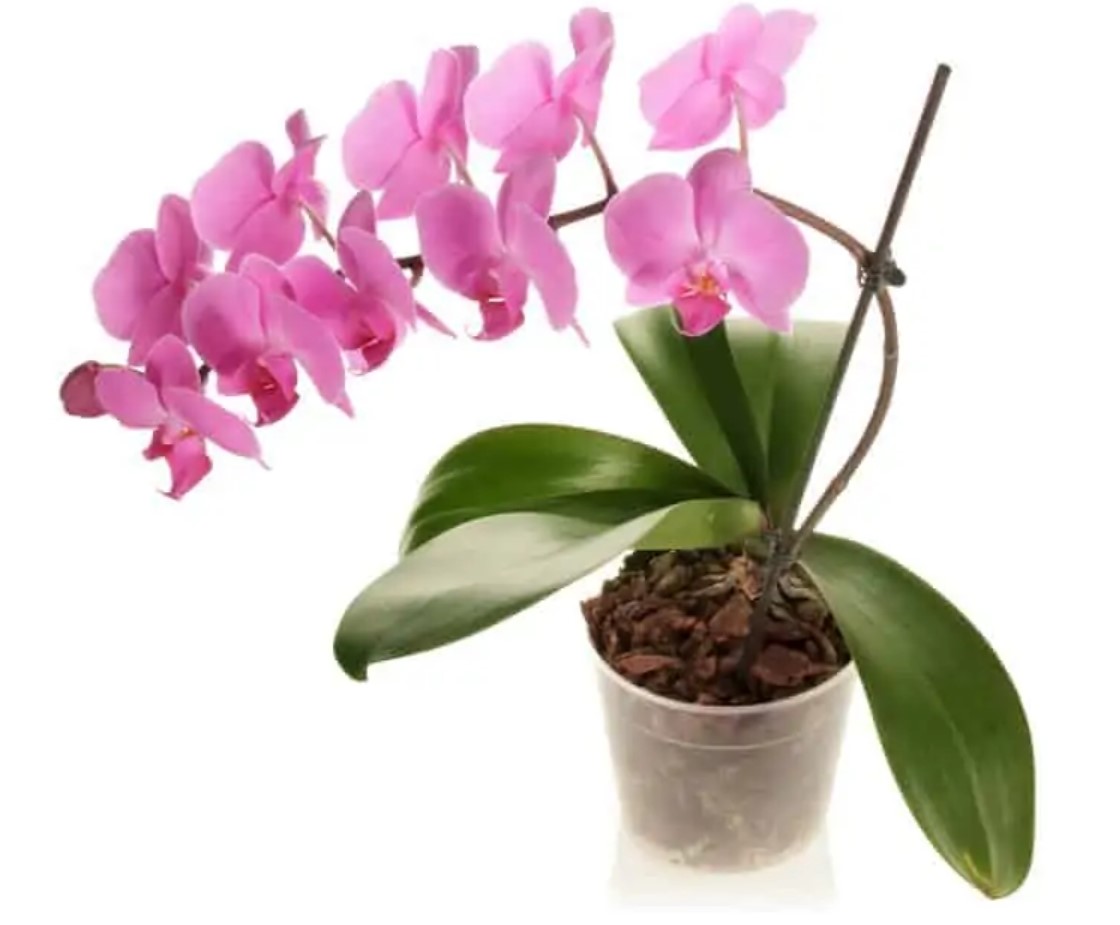It is important to understand the root cause of why your orchid’s leaves have become wilted and drooping before attempting to repair it. The six most common how to fix wilting orchid leaves are underwatering, overwatering, sunburn, lack of nutrients, pests, and disease.
Underwatering is one of the most common causes of wilted and drooping leaves in orchids. If your orchid is not getting enough water, it will struggle to photosynthesize and absorb nutrients from the soil. To fix this problem, make sure that you are watering your orchid consistently and deeply, making sure that all parts of the plant are receiving enough moisture.
On the other hand, overwatering can also be a cause of wilting and drooping leaves in orchids. When an orchid is overwatered, it can cause root rot, which will prevent the plant from taking in water and nutrients. To avoid this issue, make sure that you are not overwatering your orchid and that the soil is draining quickly and evenly.
Another common cause of wilting leaves in orchids is sunburn. Orchids need bright, indirect light to thrive, so make sure you are not placing your plant in direct sunlight for too long. If it does receive too much light, the leaves may become burnt.
Causes of Droopy Orchid Leaves
Droopy and wrinkly leaves on orchids are a common issue that can be caused by both too much and too little water. If your Phalaenopsis orchid is not receiving the right amount of moisture, it may display droopy leaves as a sign of distress.
The key to giving an orchid the correct level of moisture is to maintain a balance between dry and wet. If the soil feels dry several inches below the surface, it’s time to water your orchid. But be sure not to overdo it—overwatering can cause root rot, another common cause of droopy orchid leaves.
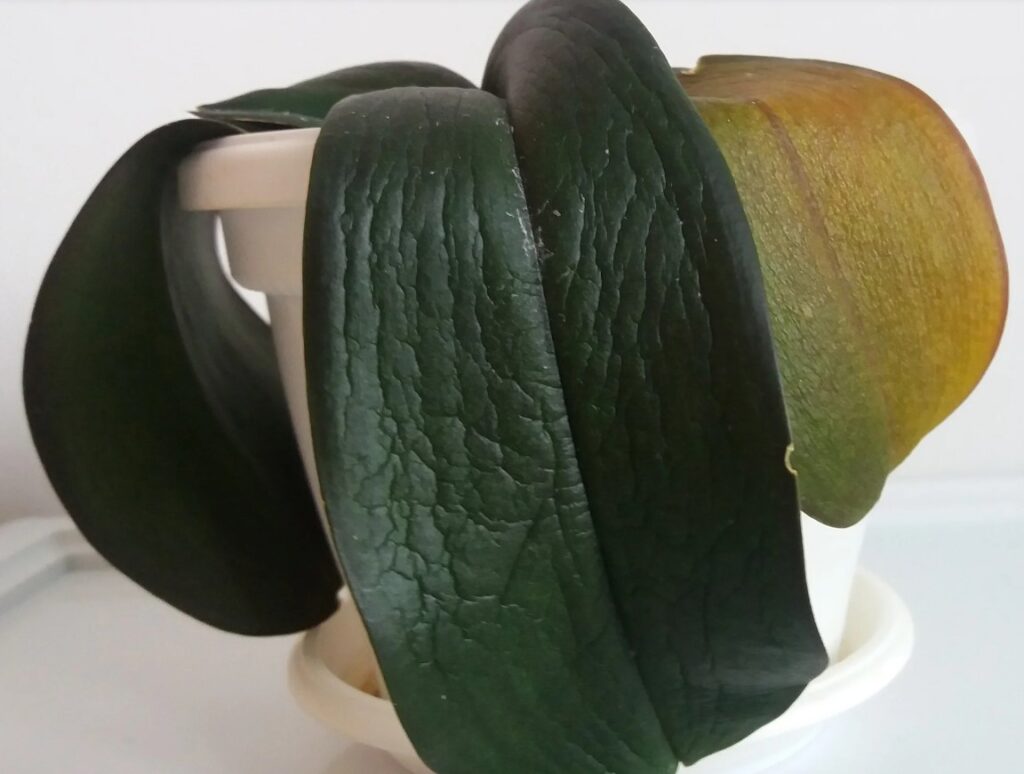
If you find that your Phalaenopsis orchid has droopy leaves, you can take action to get it back in shape. The first step is to determine if the problem is due to too much water or not enough.
If the soil around your orchid feels wet to the touch, it’s likely that you’ve been overwatering and should wait a few days before giving it another drink. If the soil feels dry, or if your plant’s leaves are wrinkled and curled, you can water it more often to bring the moisture levels back up.
Once you’ve determined the cause of the droopy leaves, be sure to monitor your Phalaenopsis.
Reviving an Overwatered Orchid:
How to Properly Water an Orchid
Watering an orchid is a crucial part of keeping it healthy and happy. Properly watering your orchid will ensure that your plant gets the hydration it needs without becoming overly saturated and developing root rot.
There are two ways to water your orchid: sink-watering and soaking. When sinking-watering your orchid, use tepid water and thoroughly soak all of the potting medium for 15-30 seconds. Make sure you wet the aerial roots as well, and dislodge any water that is stuck between leaves to avoid root rot.
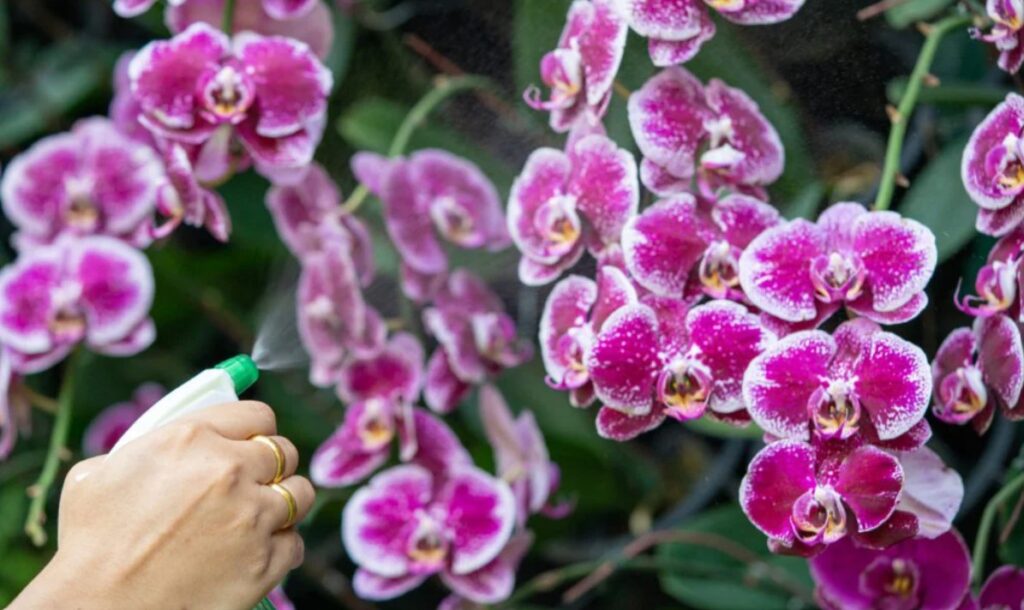
The second method is to let your potted orchid ‘soak’ in a pot or bucket without a drainage hole. Add water until it reaches the rim of the pot and let your orchid soak for 15-20 minutes. Afterwards, be sure to empty out any excess water that is left in the bottom of the pot or bucket before you place your plant back into its original spot.
By regularly following these steps, you’ll be able to properly water your orchid and ensure that it stays healthy. Remember, proper watering of an orchid is key in keeping your plant blooming year after year. So make sure you don’t forget this important part of orchid care!
Can wrinkled orchid leaves recover?
Orchid leaves are known to have a long recovery process, especially if they are wrinkled. To ensure that your orchid leaves can recover, it’s important to give them extra care and attention during this time. Initially, you’ll want to check the soil for proper moisture levels.
If it is too dry, water the plant more frequently. Additionally, make sure that your orchid is getting enough sunlight but not too much.
If you find that despite your best efforts, your wrinkled leaves are still wrinkled and wilted, you should give the plant a few weeks to rest. During this time, reduce watering and limit direct sunlight. Once the leaves start to regain their color and texture, you can begin to slowly increase the amount of water and sunlight.
Can wrinkled orchid leaves recover? Up to a certain point, yes they can recover! With proper attention to watering (and patience and time) your leaves can recover. However, it will take some time for the plant.
Should I cut off wrinkled orchid leaves?
When it comes to caring for moth orchids, one common question is whether you should cut off wrinkled orchid leaves. The short answer is that it depends on the color of the leaves. If the leaves have fully yellowed, then it’s safe to cut them off.
Otherwise, if the leaves are still green (even if they’re droopy), then it’s best to leave them on. This will benefit the plant, as moth orchids typically only grow one or two new leaves per year.
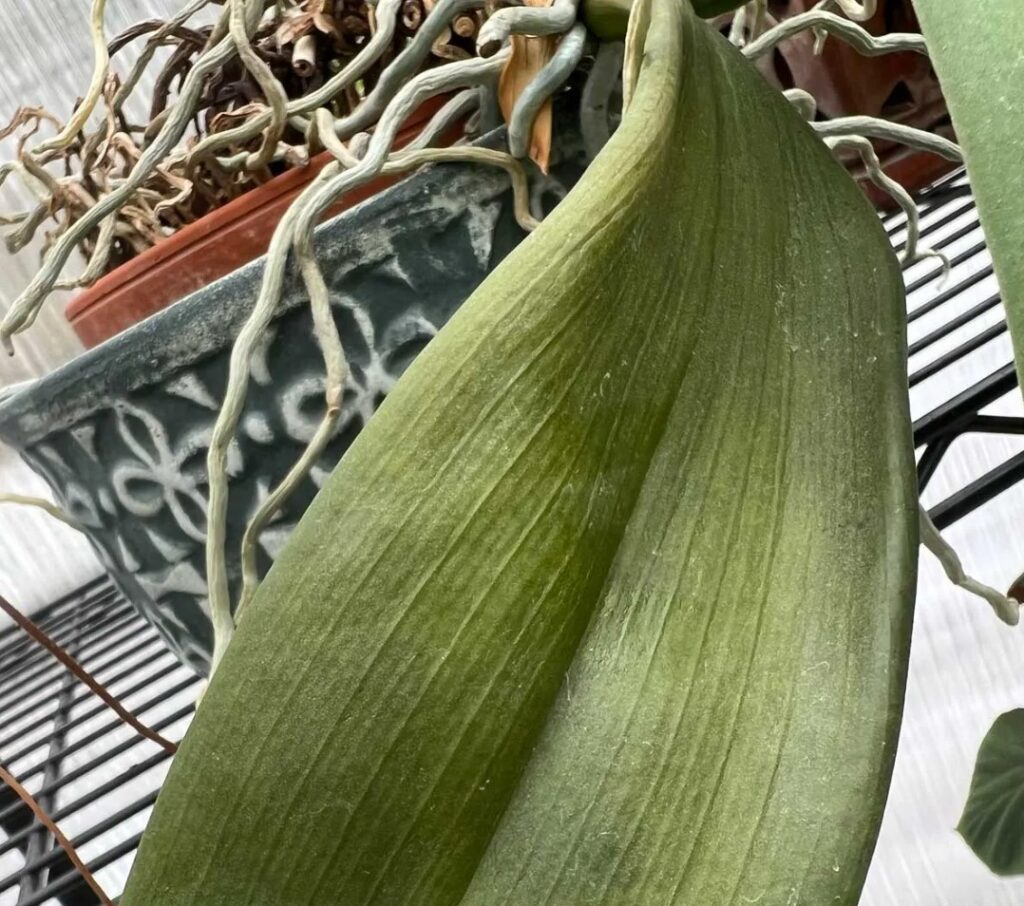
When caring for an orchid, always make sure to follow the general guidelines of watering and fertilizing and be sure to check the leaves for signs of yellowing. This will help ensure that your orchid remains healthy and happy!
If you’re ever unsure about what to do, it’s always best to consult with a professional in order to learn more specific advice tailored to your particular situation.
Root Rot is a Problem
Root rot is a major issue for all plants and it can be very damaging to an orchid that is suffering from it. Root rot occurs when there is too much moisture around the roots of the plant, which can lead to fungal growth and root damage.
Root rot can weaken the plant, disrupting its ability to function normally by reducing the plant’s metabolic processes. Root rot is one of the leading causes of droopy leaves in orchids.
To determine if your orchid’s drooping leaves are a result of root rot, look for additional signs such as browning and yellowing of the roots, loss of color, brown and moist areas on both foliage and roots, and lesions. If any of these are present on your orchid, the problem is most likely orchid’s roots and requires immediate attention.
To combat Root Rot in an orchid, it is important to take preventative measures such as providing proper drainage for the potting mix, avoiding overwatering, improving air circulation around the plant.
How Do You Treat Limp Orchid Leaves?
Limp orchid leaves can be a major source of frustration for many orchid growers. Often, the cause is not immediately obvious and so it can be difficult to know how to treat them. Fortunately, there are some simple steps you can take to revive limp orchid leaves and get them looking healthy and vibrant again.
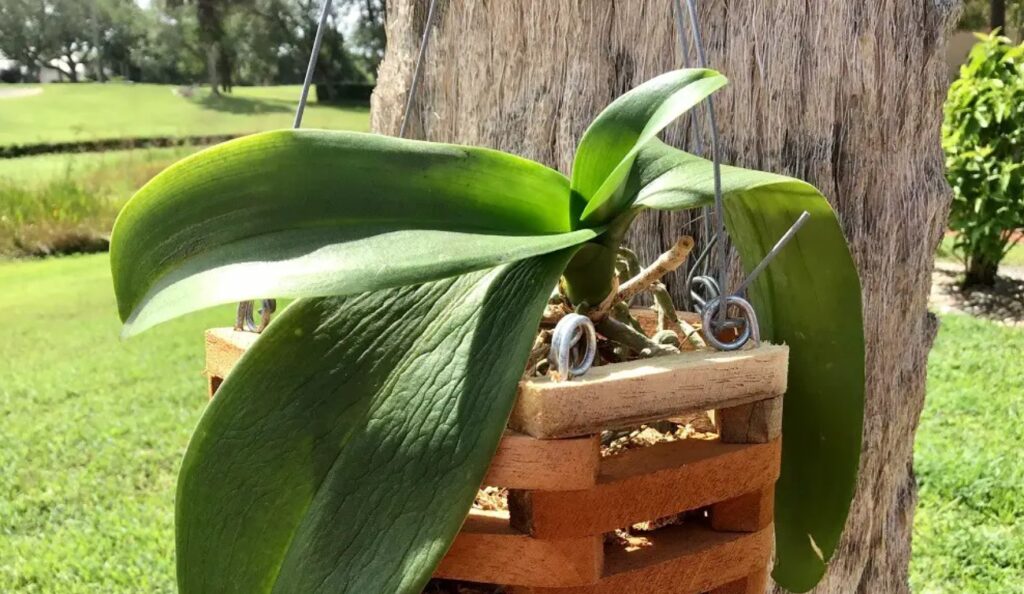
Treating Limp Orchid Leaves Due to Underwatering
Treating limp orchid leaves due to underwatering is an important step in maintaining healthy plants. Underwatering occurs when plants do not receive enough water and can lead to wilting or yellowing leaves. To properly diagnose the situation, start by inspecting the potting mix and checking for any dry roots. If you notice that the potting mix is dry.
Treating Limp Orchid Leaves Due to Overwatering
When treating limp orchid leaves due to overwatering, the first step is to clean out the root system from the potting mix. Care needs to be taken not to damage any of the roots during this process and it can also be beneficial to lightly water the root system so that any unhealthy or damaged roots will be easily identifiable.
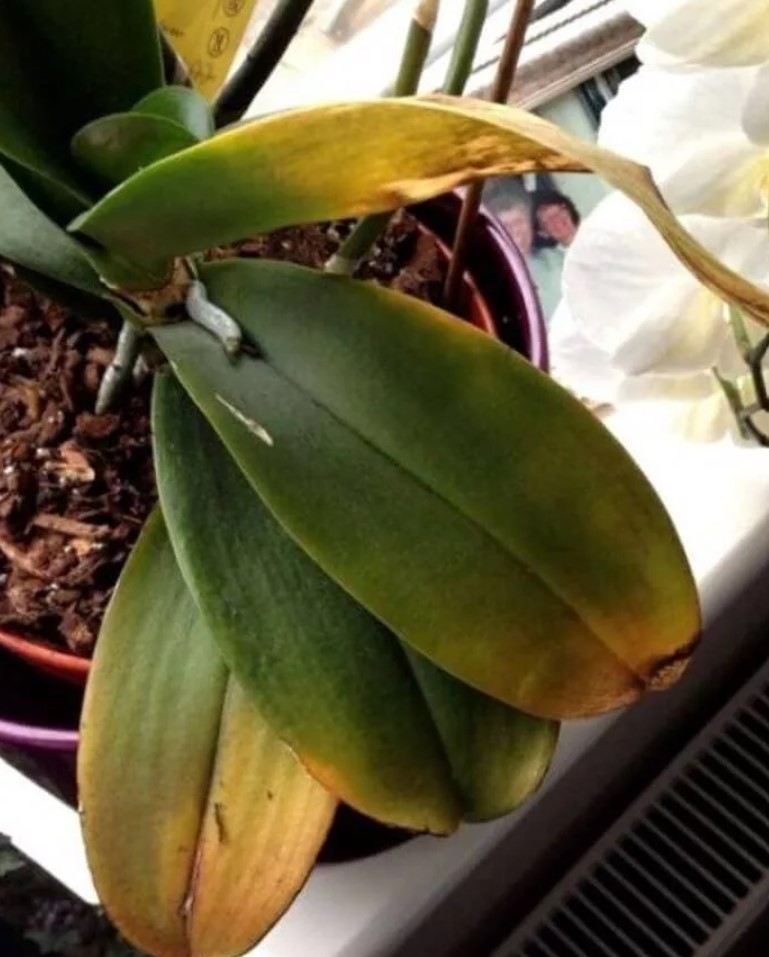
Unhealthy roots will usually appear yellow or brown, while healthy roots have a bright and glossy green colour.
Once the unhealthy roots have been identified, it is important to use clean and sharp pruning shears to trim away all of the bad parts. If any root balls are found then these should also be removed from the plant.
Treating Limp Orchid Leaves Due to Root Rot
Root rot, also known as collar rot, is a common disease that affects orchids and can cause limp leaves, discoloration and even death if left untreated. Treating limp orchid leaves due to root rot requires more than just proper watering; there are specific steps one must take to ensure the health of the plant.
Treating Limp Orchid Leaves Due to Old and Deteriorated Potting Mix
If your orchid leaves are limp and you suspect that the cause is an old and deteriorating potting mix, the best way to rectify this situation is by repotting your plant with a fresh mix.
The existing mix should be checked for intactness, as it can be a sign of a poor quality soil if it easily breaks apart. If the potting mix contains bark chips and sphagnum moss, inspect them to ensure they are still intact and not broken down.
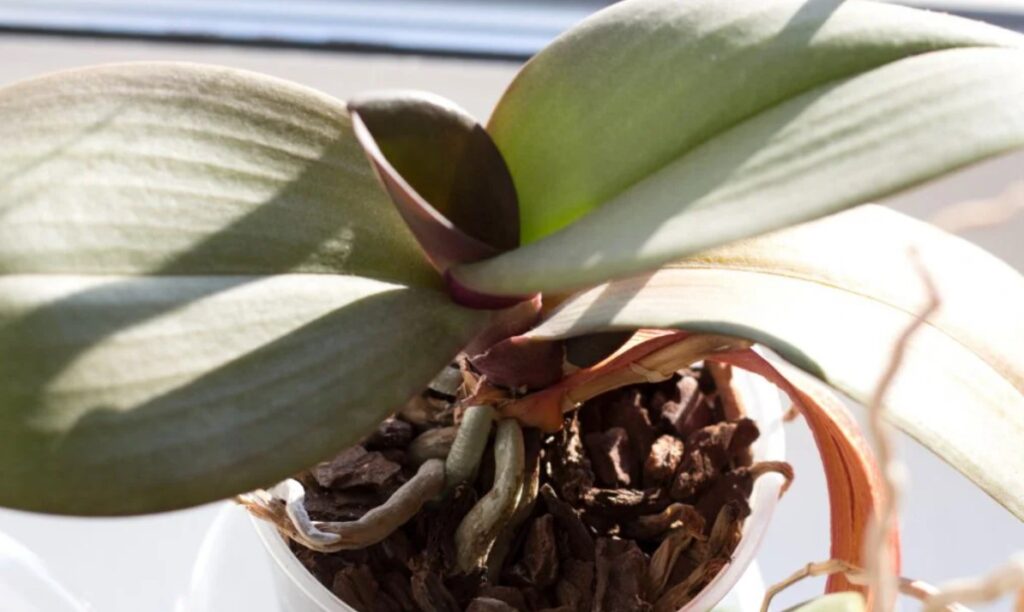
Cold tea soak watering can also be applied to give your orchid a boost in such cases. Treating limp leaves due to an old potting mix should always be done as soon as possible, as the orchid can make a full recovery when addressed in time. By repotting your plant and using a fresh potting mix, you will also ensure that it’s roots have the proper environment to thrive in.
In conclusion, if limp leaves are suspected to be caused by an old and deteriorated potting mix.
Ways of Treating Limp Orchid Leaves Due to Cold
If you’ve noticed your orchid’s leaves drooping and you suspect that it is due to cold temperatures, then there are a few steps you can take to help get your orchid back in shape.
First, carefully remove your orchid from its container and inspect the roots for any signs of damage. Some indicators of damage include drying, rotting or yellowing of the roots. If you find any unhealthy looking roots, use a clean pair of pruning shears to trim them off.
Afterwards, apply organic sulfur powder to help prevent further rot and infection from spreading. Next, repot your orchid in a “dry” potting mix that is not too wet. Since the root cause of your orchid’s drooping leaves is likely cold, avoid watering the plant after repotting it to ensure that temperatures remain low.
Finally, make sure to keep an eye on the environment around your orchid and provide adequate protection from cold drafts and winds. With these tips in mind, you can help your orchid’s leaves get back to their healthy, vibrant state in no time!
By following the steps above, you can ensure that your orchid’s limp leaves due to cold temperatures are treated correctly and brought back to life. Just remember to avoid overwatering and provide adequate protection from cold drafts and winds.
Three Groups of Orchids Based On Temperature Preference
They are, in fact, normally divided into three groups:
Cool Growing Orchids
Cool growing orchids are some of the most popular types of orchids due to their ability to thrive in relatively cool temperatures. Cool growing orchids generally like temperatures between 60 degrees Fahrenheit to 70 degrees Fahrenheit during the summer months, and tend to do best when temperatures never drop below 50 degrees Fahrenheit during winter.
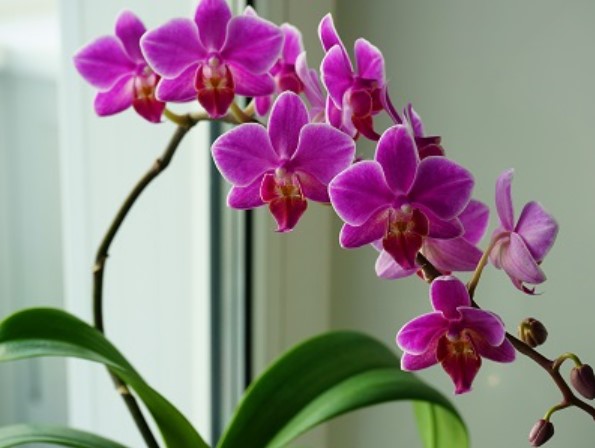
Cool growing orchids include Pleurothallis Lynniana, Masdevallia, Dracula, Porroglossum, Lepanthes, Odontoglossum, Cymbidium, and some species from the Dendrobium genus. Cool growing orchids are relatively easy to care for and make an excellent addition to any home garden.
Warm Growing Orchids
Warm growing orchids are one of the most popular varieties of flowering plants. These types of orchids are known for their vibrant colors, delicate petals, and lush foliage. Warm growing orchids typically enjoy temperatures that range from 70-80 degrees Fahrenheit during the day and drop to 65 degrees at night.
Encyclia Cordigera, Phalaenopsis Orchid (or Moth Orchid), Brassavola, Vanda, Cattleya, Phalaenopsis and some species from the Dendrobium genus such as Kingianum, Goldschmidtianum, Fytchianum, Dichaeoides and Ambioniese.
Treating Limp Orchid Leaves Due to Overheating
When it comes to treating limp orchid leaves due to overheating, the most important thing you can do is make sure your orchid is not in direct sunlight. You want your orchid in an area with indirect light and a temperature of between 80 degrees Fahrenheit during the day and 65 degrees Fahrenheit at night.
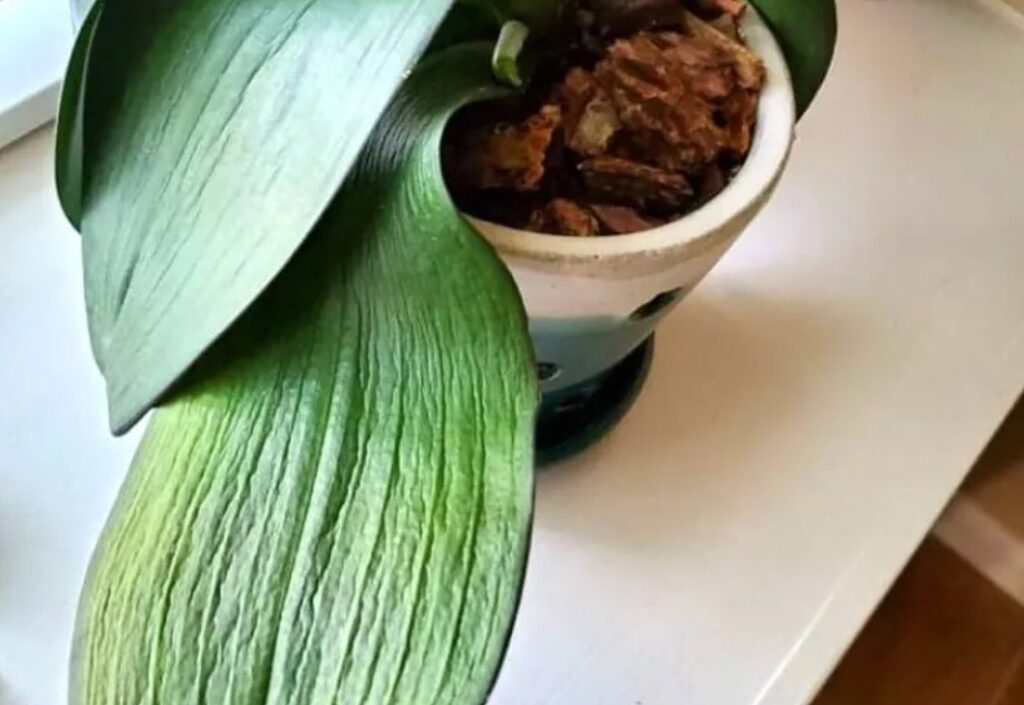
It’s also important not to use cold water when watering your orchid after it has been exposed to excessive heat, as this could shock the plant. Unfortunately, the chances of saving severely damaged leaves and flowers are quite low. If you see that many of your orchid’s leaves have wilted beyond repair, you may have to consider replacing them with new ones.
Will Droopy Orchid Leaves Recover?
In order for droopy orchid leaves to recover, there are some important factors to consider. First, the cause of the drooping must be determined. If it’s caused by underwatering, then the possibility of recovery is high. However, if root rot has set in or the foliage has become severely damaged, then it’s likely too late for recovery.
In our experience, it is much easier to recover droopy orchid leaves that have been underwatered compared to those that have been overwatered. If the root system has not been severely damaged and the foliage is still in relatively good shape, then a few simple steps can be taken to help revive the droopy orchid leaves.
These steps include adjusting your watering schedule to make sure that your plants are not overwatered, providing adequate drainage for the roots, and ensuring that there is enough humidity in the air. Additionally, fertilizing regularly with a balanced fertilizer can help restore lost nutrients and promote healthy growth.
Should You Remove Droopy Orchid Leaves?
Droopy orchid leaves can be an indication of an underlying problem, such as improper watering, too little light, or a bacterial or fungal infection. Should you remove these droopy leaves? The answer depends on the cause. If the drooping is due to improper care, then it may not be necessary to remove droopy orchid leaves.
Answers on questions:
Should I cut off limp orchid leaves?
Should you cut off limp orchid leaves? Generally speaking, it is best to avoid trimming your orchid leaves. Not only does it run the risk of introducing infection or disease into your plant, but such a practice can impede proper growth.
The leaves of an orchid are essential for photosynthesis and therefore should not be removed unless absolutely necessary. If your orchid has been affected by a fungal or bacterial disease, then trimming off the infected leaves may help to prevent further spread and save the plant. Otherwise, it is best to leave them as they are.
In some cases, unhealthy leaves can be replaced with healthy ones if you can find a suitable match. However, this should only be attempted if you are confident in your ability to do so, as it could also lead to infection or even damage the plant beyond repair.
In summary, trimming orchid leaves is generally not necessary for proper growth and can open up the plant to infection.
Why are my orchid leaves limp and wrinkled?
Wrinkled orchid leaves are a common problem for many orchid lovers. In most cases, the cause of this wilting is due to the plant not getting enough water. This can be the result of both under-watering and over-watering. When an orchid does not get enough water, it will begin to suffer from dehydration, causing the leaves to become limp and wrinkled.
On the other hand, when an orchid is over-watered it can cause root rot, which will also lead to limpid and wrinkly leaves. With both of these scenarios, the best solution is to ensure that your orchid is getting the correct amount of water and drainage that it needs.
Keeping your orchid’s potting soil lightly moist and avoiding over-watering is key to preventing limp and wrinkled leaves. If you think that underwatering or overwatering might be the cause of your plant’s wilting, adjust the watering schedule accordingly to ensure it gets enough water but isn’t sitting. Read also…
Will wilted orchid leaves recover?
It depends on the cause of the wilting. If the wilting is due to lack of water or too much sun exposure, then providing the plant with proper care can help the leaves recover. However, if the wilting is due to a disease or pest infestation, the leaves may not recover and may need to be removed.
Should I cut off limp orchid leaves?
If the orchid leaves are limp but still green and healthy-looking, it’s best to wait and see if they recover with proper care. However, if the leaves are completely yellow or brown and shriveled, it’s safe to assume they are dead and should be removed.
Why are the leaves on my orchid drooping?
The leaves on an orchid may droop due to several reasons, such as overwatering or underwatering, insufficient light or too much direct sunlight, poor air circulation, pest infestation, or a disease. Identifying the underlying cause and addressing it is important to help the orchid recover.
What does a dehydrated orchid look like?
A dehydrated orchid may have wrinkled or shriveled leaves and pseudobulbs. The leaves may also be dry to the touch and may have turned yellow or brown. Additionally, the flowers may wilt and drop prematurely, and the roots may appear dry and brittle.
What do overwatered orchids look like?
Overwatered orchids may have yellowing or browning leaves, and the roots may appear mushy, black, or brown instead of firm and white or green. The plant may also have a foul odor, indicating root rot. In severe cases, the leaves may drop from the plant.
Are tea bags good for orchids?
Used tea bags can be beneficial for orchids as they can add organic matter and nutrients to the soil. However, it’s important to ensure that the tea bags are free of any harmful additives or chemicals before using them near the orchids.

